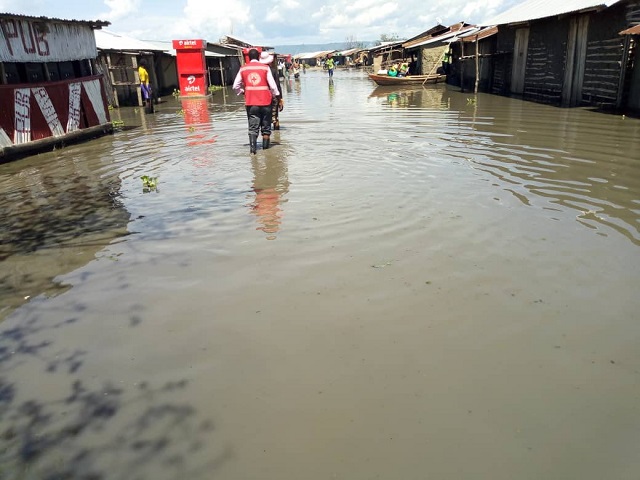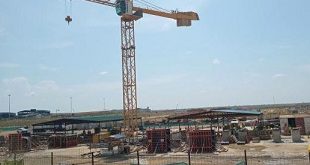
Kampala, Uganda | THE INDEPENDENT | Experts have attributed the rising water levels of Lake Victoria to prolonged heavy rainfall and direct inflows from rivers.
Lake Victoria water levels have been rising since October 2019.
The water levels rose from 12 metres in October 2019 to 12.8 metres in March 2020 and to 13.32 metres on 30th April 2020.
However, by 8th May, 2020, the water level was at 13.42 metres, surpassing the 13.41 metres last reached in 1964 which had been the highest ever recorded in 50 years.
The level rose further on May 13th to 13.46 metres and then it dropped to 13.45 metres on May 17th. The level has since been oscillating between 13.45 -13.48 metres.
The lowest water level recorded on Lake Victoria was 10.35 metres in 1923, followed by 10.53 metres in 2005-2006.
The water level is influenced by inflows (rainfall received and discharge from rivers that pour into the basin) and outflows (evaporation and release at Jinja dam).
The commissioner for water regulation and management at the Ministry of Water, Dr Callist Tindimugaya says that the inflows have exceeded the outflows therefore rising the water levels.
Festus Luboyera, the Executive Director of Uganda National Meteorological Authority (UNMA) says some of the rivers that flow into the lake are filling up due to the higher rains received particularly in Rwanda, Kenya and Burundi since October.
Twenty three rivers flow into the lake with the majority (eleven) coming from Tanzania. However, the largest discharges have been recorded from Kagera (from Rwanda and Burundi) and Nzoia, Yala, Gucha-Migori which flow from Kenya.
Luboyera further explains that some of the areas across Uganda such as Entebbe, Kampala, Mukono and Jinja recorded more than the expected rains in the wet seasons of September- December 2019 and March -May 2020.
“Even the dry months of December and January recorded more rainfall than observed in 29 years,” says Luboyera.
Uganda also received heavy rains for two consecutive years resulting in the high water levels.
David Kureeba, President of National Association of Professional Environmentalists (NAPE) however says the lake did not flood in 1964 because the catchment areas like swamps were still intact.
Apollo Berugyeya, a civil engineer at Makerere University’s Department of Civil and Environmental Engineering however says the levels are rising due to the “natural cycle of Lake Victoria”
“The lake has dried up before, then the water levels receded in 2005 and now the levels are up again just like in 1964,” says Berugyeya.
University of Houston Researcher in Sedimentary Geology, Emily Beverly noted last year that the lake has dried once in the last 100,000 years and the part in Kenya could dry up in 400 years.
Also, most of the research has delved on the receding water levels. As a result, Tindimugaya says the ministry did not expect the historical rising lake water levels.
However, the water ministry has instructed power generator Eskom to release 2,400 cubic metres per second from Lake Victoria into the River Nile at Owen Falls Dam to limit flooding at Lake Kyoga and Lake Albert downstream.
Eskom can release a maximum of 3,000 cubic metres per second.
However, Berugyeya says Uganda needs to plan for discharge infrastructure on rivers to control inflows.
This is because over 40 million people across East Africa depend on Lake Victoria for food, business and transport.
The Lake Victoria Basin Commission –LVBC estimates that over 200,000 people have so far been displaced in Uganda and Kenya (especially Kisumu) after floods submerged houses and washed away crops.
In Entebbe Municipality, over 1,000 people including residents and business people at Nakiwogo and Kigungu landing sites have been affected.
Experts predict that the water levels will remain high until early June.
******
URN
 The Independent Uganda: You get the Truth we Pay the Price
The Independent Uganda: You get the Truth we Pay the Price




Wow! At last I got a weblog from where I know how to
actually get valuable data regarding my study and knowledge.
Also, there is my method to Fall Asleep – Rain Sound for
Sleeping https://youtu.be/IV82ccxmZY8